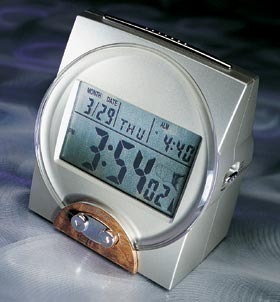What is a Nuclear Time Unit?
The Nuclear Time Unit (NTU) measures how much time it takes for a light ray traveling in a vacuum to travel the diameter of a hydrogen atom. In order to calculate a single NTU, divide the diameter of a hydrogen atom (approximately 1.06 x 10^-10 meters by the speed of light in a vacuum or free space (3 x 10^8 m/sec) which is 3.53 x 10 ^ -19 sec.
What is the Atomic Clock?
The atomic clock is known as the most accurate in the world. It uses electronic transition frequency that occurs in the atom’s microwave region and is used as a frequency standard for keeping time. The atomic clock is used as the standard for international time services and is used in critical navigation systems such as GPS and to control the frequency that TVs broadcast and transmit.
What Are the Principles of Operation of the Atomic Clock?
Many people get confused and think that an atomic clock is based on nuclear physics. It is actually based on the physics of an atom and uses microwave signals that electrons in atoms transmit or emit when their energy level changes. Since the atomic clock’s invention, improvements have been made so that current models cool atoms to almost absolute zero by slowing them with lasers. The clock then probes them in a microwave-filled cavity. The ultimate accuracy of the clock is dependent on the atoms’ temperature in the clock, with colder atoms having a higher measure of accuracy due to the longer probe times that are possible.
What is the History of the Atomic Clock?
The first person to suggest using the measure of transitions associated with atoms was Lord Kelvin in 1879. The first way to measure atomic time was to use magnetic resonance which was invented by Isidor Rabi in the 1930s. The public was unaware that it could be the basis of a clock until 1945. The U.S. National Bureau of Standards (the precursor agency to NIST) built the first atomic clock in 1949 to demonstrate the concept, with the first accurate clock being built by Louis Essen in 1955 in the United Kingdom. The National Company built the first commercial atomic clock in the mid-1950s. HP finally produced rack-mounted clocks in 1964. In the later-portion of the1990s, significant advances were made in the fields of laser and atom trapping that resulted in the furtherance of atomic clock technology. NIST scientists produced the first chip-sized atomic clock in 2004.


Comments - No Responses to “What is a Nuclear Time Unit?”
Sorry but comments are closed at this time.